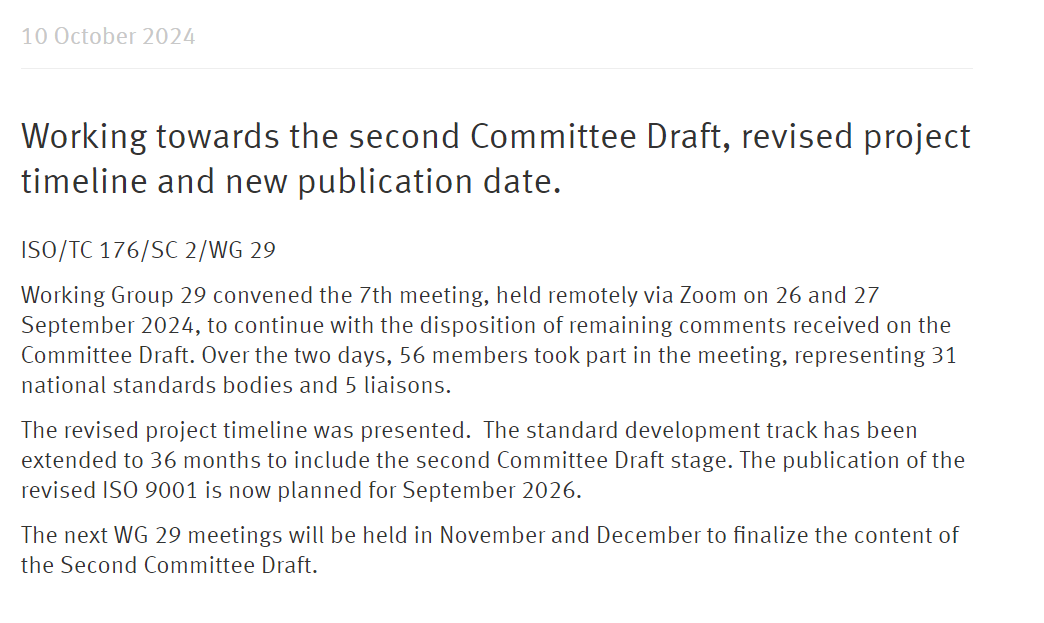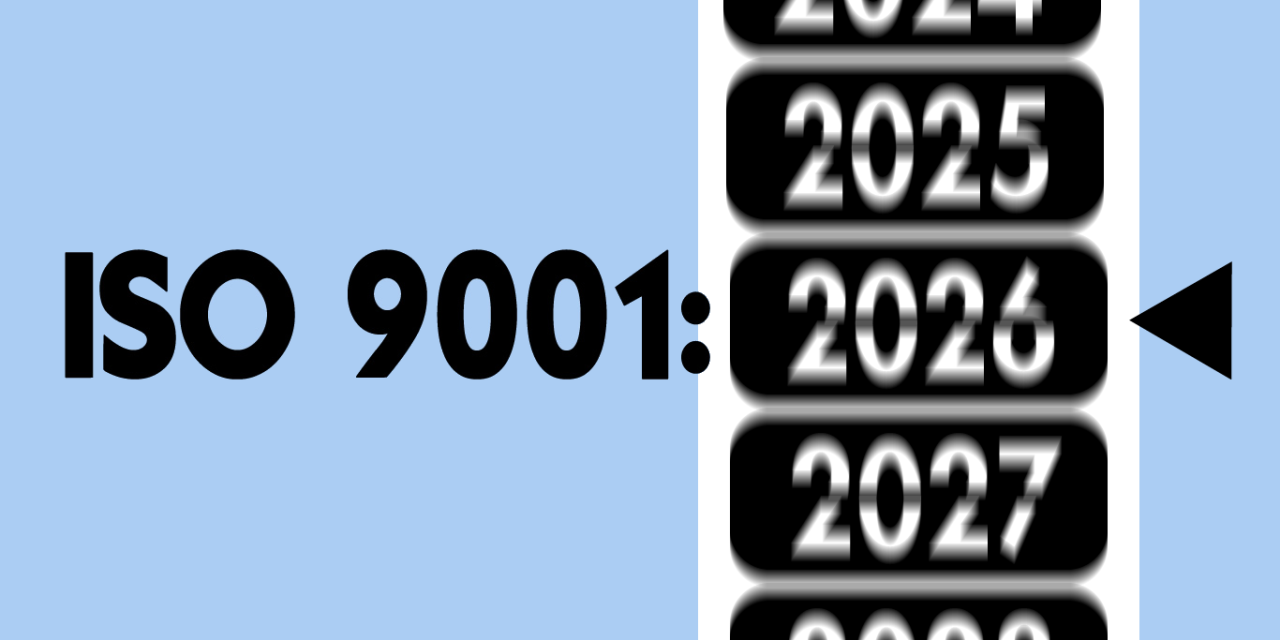ISO/TC 176, the technical committee responsible for quality management standards, has announced that the upcoming revision to ISO 9001 will be published in September of 2026, some four years later than initially planned.

The official notice, found here, claims this is to allow the processing of comments on the first Committee Draft (CD1) of the standard, which was met with widespread scorn. But sources within TC 176 have reported to Oxebridge that the delays are due to four concurrent problems that ISO has primarily incurred on itself.
Sources of Delay
First, ISO pushed a revision to the standard over the objections of the world’s official ISO member nations, who voted — in various ways — five times to reject any updates to ISO 9001:2015. ISO continued holding votes until enough nations abstained or forgot to vote, giving the revision decision a slight majority. This led some nations to oppose the CD1 on principle. The original planned date for the ISO 9001 revision was 2022, but it took ISO years to obtain the approval to override the world’s repeated rejections.
Next, the CD1 draft proved to be a rushed, copy-and-paste version of the current ISO 9001:2015 standard with nearly no changes at all. The only change to requirements was the bizarre decision to make the measurement of quality objectives optional rather than mandatory. All other changes were minor wording additions to non-binding notes, and the insertion of an entire book as an appendix. The book, a small business guide to ISO 9001, had failed to be a popular seller for ISO, and ISO sought to correct that by making it a mandatory part of ISO 9001 itself. That decision was also derided since the book would have only applied to small businesses, not larger enterprises that use ISO 9001, and would have likely pushed the price of ISO 9001 up to $300 or more.
Behind the scenes, meanwhile, ISO was pushing TC 176 to ensure the new version aligned with its requirements for “ISO Smart” standards. This requires all ISO standards to be written in a way that allows them to be “machine-readable.” ISO spokespersons said this is intended to ensure AI systems can “read” ISO standards, even though modern AI systems can parse plain text. ISO has failed to make the case for its ISO Smart initiative, which is largely seen as a means to convert PDF and paper-based standards into a “standards-as-a-service” model. Under Smart ISO, users will have to subscribe to gain monthly access to ISO standards, and if they cancel their subscription, they will lose access to them. ISO also claims that Smart ISO standards will be updated “in real-time,” suggesting that ISO is doing away with stakeholder reviews and member voting on standards.
Finally, TC 176 has seen a revolt among key standards authors, nearly all of whom are private consultants. Consultants recognized that part of ISO’s push towards AI was to eventually offer automated implementation tools for standards like ISO 9001, which would replace the need to hire consultants. Some consultants also objected to the increased rejection of TC 176 input on the standard, as the ISO Executive wants to dictate content without any subject matter expert input.
Impact on Users, AS9100
There is no guarantee that TC 176 will meet the 2026 deadline either, but it is expected to. The CD2 document is only partially written, with ISO allowing a few handpicked BSI representatives to determine the text to be included, shunning the input of most national delegates.
ISO is refusing to accept any stakeholder feedback that goes against its actions, even as ISO ignores its missteps in this effort to date.
If the standard is published in 2026, companies will have three years to implement the changes, making the deadline for compliance September 2029.
The delay likely means the revision of the aerospace standard AS9100 will be released before the release of ISO 9001:2026. Initially, the IAQG was going to wait to publish the revision after the release of ISO 9001, but delays by ISO have frustrated the aerospace team. The new AS9100 standard, to be called “IA9100,” is reportedly finished and was only waiting on the revised ISO 9010 text, upon which it is based. It is now likely that the IAQG will publish IA9100 in 2025, and then issue another revision, as “IA9100 Rev A” either in 2026 or 2027, after the ISO standard is updated.








